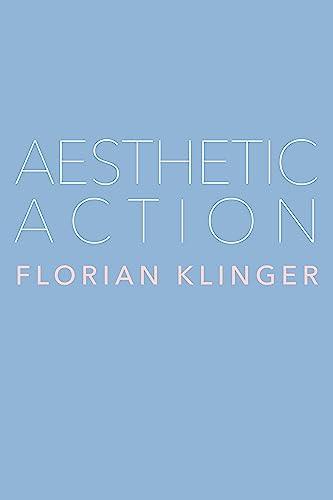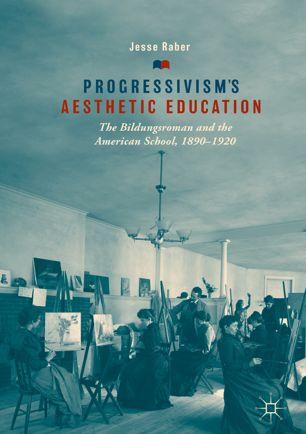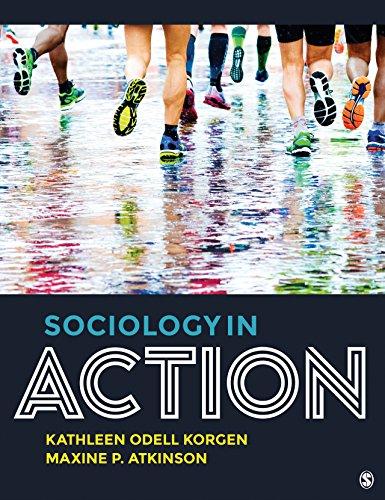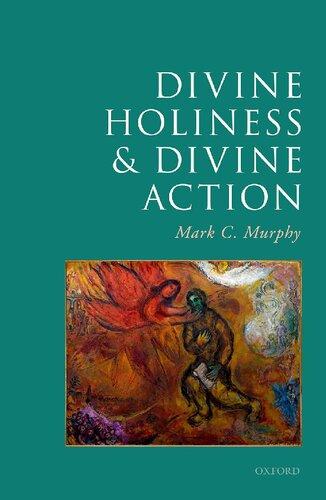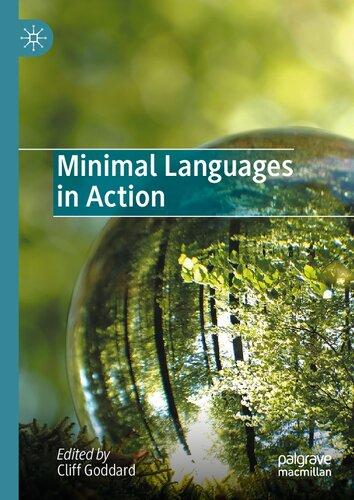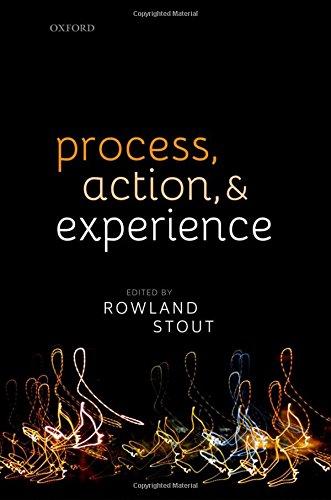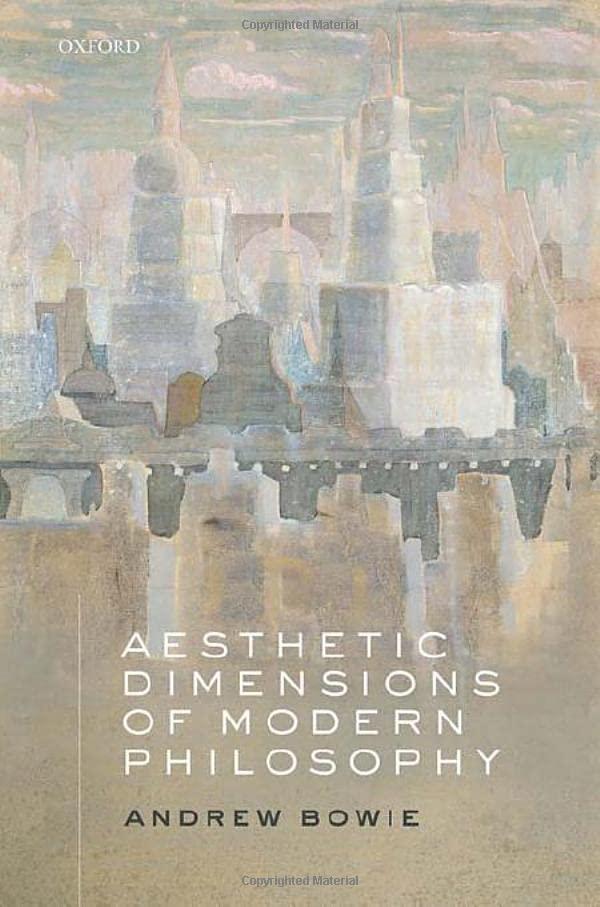Aesthetic Action
FLORIAN KLINGER
STANFORD UNIVERSITY PRESS
Stanford, California
Stanford University Press Stanford, California
© 2024 by Florian Klinger. All rights reserved.
No part of this book may be reproduced or transmitted in any form or by any means, electronic or mechanical, including photocopying and recording, or in any information storage or retrieval system, without the prior written permission of Stanford University Press.
Printed in the United States of America on acid-free, archival-quality paper
Library of Congress Cataloging-in-Publication Data
Names: Klinger, Florian, author.
Title: Aesthetic action / Florian Klinger.
Description: Stanford, California : Stanford University Press, 2024. | Includes bibliographical references and index.
Identifiers: LCCN 2023011519 (print) | LCCN 2023011520 (ebook) | ISBN 9781503636972 (cloth) | ISBN 9781503637627 (ebook)
Subjects: LCSH: Aesthetics, Modern. | Action theory.
Classification: LCC BH151 .K56 2024 (print) | LCC BH151 (ebook) | DDC 111/.85— dc23/eng/20230721
LC record available at https://lccn.loc.gov/2023011519
LC ebook record available at https://lccn.loc.gov/2023011520
CONTENTS Preface
ONE: The Unsettling
1. The Thought of Aesthetic Distinction
2. Life Form and Settledness
3. Aesthetic Unsettling
4. The Use of Unsettling
5. The Account
TWO: Accounting for Ourselves
1. Determinacy
2. The Original Scene of Self-Determination
3. Form as Answer: Hegel’s Conception of the Aesthetic as Determinacy
4. Form as Question: A Conception of the Aesthetic as Indeterminacy
5. The Task of a Unified Accounting
THREE: A Three-Way Capacity
1. Rationality and Indeterminacy
2. A Rational Capacity
3. Failed Attempts at Conceiving Indeterminacy
4. Indeterminacy as Part of Our Form
5. Indeterminacy asSuch
FOUR: Logical Account of Aesthetic Action: Aspectual Irresolution
1. The Concept of Aesthetic Action
2. Distinction through Aspectual Irresolution
3. Internal Unity in Crisis
4. Aesthetic Indeterminacy
5. External Unity with Action at Large
FIVE: Material Account of Aesthetic Action: Bond without Terms
1. Logical and Material Accounting
2. Bond without Terms
3. Aesthetic Interaction
4. Life as Such
5. The Question of Who We Are
SIX: Aesthetic Transformation
1. Aesthetic Action as Transformation
2. Performance without Resources
3. The Work of Aspectual Irresolution
4. Transformation That Includes Its Terms
5. The Aesthetic Self
SEVEN: The Use of the Aesthetic
1. The Political as Example
2. Our Form as Political Task
3. Tino Sehgal: Genus Politics
4. Kara Walker: Politics of Difference
5. Mazen Kerbaj: Politics of Life as Such
Notes
Bibliography Index
PREFACE
When you work in philosophical aesthetics, as I do, you face one particular difficulty: this tradition is unified by little more than the question of whether there might at all be such a thing as the aesthetic and—if the answer is yes—whether pursuing it is worth our while. Unlike most other traditions, this one involves questioning its own right to exist. With every book in aesthetics, the question of why there might or should be a concept of the aesthetic needs to be answered anew.
This book invests in the possibility of having such a concept, while at the same time not taking anything about it for granted. There is here not a thought of the sort that presumes what the aesthetic is— or at least such was my attempt. But then of course a starting point must be assumed, and here this comes down to a certain conception of ourselves as social and rational performers of the human life form —performers to whom the question of who belongs in this form presents itself as a political problem.
So while this book is unapologetically theoretical, and its language often technical, there is no way it can ground its language in an already established vocabulary—say, of a particular subfield of philosophy, academic discipline, or community in the arts. There is no context—in contemporary philosophy or elsewhere—to which the aesthetic belongs by default, and addressing it requires that one convene one’s own conversation.
If, consequently, this book is the opposite of a specialist conversation between initiates, with the benefit of presenting itself to readers in a highly inclusive manner, the downside is at the same time obvious. That no default language exists renders the communication that is this book fundamentally precarious. The only way I could hope to develop this communication was by following the cues provided by artistic production as it happens today, and through the help of a diverse cast of interlocutors—interlocutors
whose role, in this regard, was not merely to put the project to the test or contribute thoughts of their own but to make it possible in the first place. My gratitude goes out to all of them.
Colleagues, students, and friends who contributed to the book in conversation are Marcello Barison, Vance Byrd, Daniel Carranza, Michel Chaouli, Paulina Choh, Christopher Clarke, David Hernandez, Kirsten Ihns, Abhishek Kaicker, Demetra Kasimis, Sebastian Klinger, Tobias Lehmkuhl, Richard Neer, Sarah Nooter, Marita Tatari, and Rahel Villinger. Erica Wetter, my editor, provided excellent stewardship; two anonymous reviewers for Stanford University Press contributed generously to the development of the manuscript. I received feedback on versions, chapters, or parts of the manuscript from María Acosta López, Amir Eshel, Matthias Haase, Thomas Khurana, Yun Ha Kim, David Kretz, Susanne Luedemann, Tom Mitchell, Mark Payne, Robert Pippin, Eric Santner, Kenneth Warren, and David Wellbery. Maya Nguyen’s artistic practice has been in an ongoing exchange with the making of the book, and she has been a protagonist in the development of its central ideas.
ONE The Unsettling
1. The Thought of Aesthetic Distinction
Aesthetic Distinction
This book is an action-theoretical account of the aesthetic. The account consists in a single unified thought, the thought of aesthetic distinction. In outline, the thought is this: a certain kind of action that we perform, by virtue of being aesthetic, is different from all other action. That it is different by virtue of being aesthetic means that it is different according to its concept.1
We may gain intuitive access to this kind of difference, I suggest, by comparing the actions of a young child, a schoolteacher, and an aesthetic performer in drawing chalk lines on a blackboard. The child draws exuberant but illegible lines and, at best, aspirationally performs an action; the child is still being initiated into intentionally fulfilling a concept of any sort. As they are learning how to write on the board, their lines are a manifestation of an incomplete fulfillment of the concept performinga writingexercise. The schoolteacher, for whom this is simply an everyday part of their work, executes an action that intentionally fulfills the concept performing a writing exercise. The concept is determinate, and the teacher knows what they are doing in this fulfillment: they perform a writing exercise. The determinacy of their action lies in such a knowing what they are doing while they are doing it. The aesthetic performer performs an aesthetic action. Perhaps a version of this action can be found in Cy Twombly’s Untitled from 1969: chalk lines are drawn in rows on a dark background, a painting that stages the action of writing on a blackboard.2 The lines establish the context of teaching and learning through the performance of an exercise—in the sense of exercise
that connotes discipline, austerity, and perhaps ascesis—a practice in which the ability to write is affirmed. At the same time, however, the lines present themselves as illegible, a mere physical expression of writing rather than a signified content conveyed by it, manifesting in its looping an exuberance and playfulness that seems properly to pertain not to the teacher but to the learning child.
Rather than settling on the fulfillment of a single determinate concept, such as performingawritingexercise(the teacher’s action), Twombly’s action fulfills two concepts at once—performinga writing exercise, and manifesting childlike exuberance. Thereby, the action leaves its overall doing unresolved, because it exhibits both instruction (a writing exercise) and playful—indeed, childlike— looping exuberance. There is no room for overlap between these doings. One cannot in a single action be a teacher and a child novice.
Therefore, we cannot understand Twombly’s action the way we would understand a nonaesthetic action that joins its components such that they are parts either of one another or of an overall action to which they contribute. Twombly’s action, in its entirety, is performing a writing exercise, and then, again in its entirety, it is manifesting childlike exuberance. Those concepts are not parts that we can relate to one another but rather competing aspects of the action, each of which describes the action as a whole. While he fulfills both aspects intentionally, knowing what he is doing and thus rendering them determinately, the action does not resolve them in a single determinate concept of something the performer knows he is doing.
Clearly, then, Twombly’s action does not merely stand next to the child’s and the teacher’s as another, further action. It absorbs those actions and deploys them to an end that is altogether different, an end that we may characterize with the concept exercise/exuberance.3 The action does not just happen to be unresolved, as would be an action that is simply incomplete, poorly executed, or otherwise deficient; rather, it invests in irresolution as its point. As it intentionally presents itself under two aspects without
settling on either, it presents itself as an aspectual irresolution between those concepts—a special kind of synthesis that here is treated as the end or intended point of the action. The unresolved ambiguity that lies in aspectual irresolution manifests the indeterminacy that is the distinction of the aesthetic.
Now let us say, for the sake of argument, that the three performers’ actions look the same—the physical movement of drawing chalk lines is identical. The child does not yet have control of their hand; the teacher, while their handwriting has deteriorated after a long day, still completes the writing exercise; the aesthetic performer’s action presents an aspectual irresolution. While the child, the teacher, and the aesthetic performer do starkly different things, the difference is nothing that we can observe externally. Instead, we can account for the difference only by referring to the action’s conceptual articulation in the performer’s intention. One action falls short of intentionally fulfilling a concept (it is not properly an action), the other as the fulfillment of a determinate concept, and the last by suspending such fulfillment and instead presenting itself as an indeterminacy.
Of course, indeterminacy may also be found in the other performances. The child’s default indeterminacy is one of a capacity that is not yet fully developed. This is of interest because it shows that one cannot perform an indeterminacy by performing indeterminately. Any indeterminacy in the schoolteacher’s action would be only accidental, due to their action being incomplete—they grow tired, run out of chalk, or get called away before they have fully actualized the concept—a failed execution. By contrast, the aesthetic performer’s indeterminacy through an intentionally performed aspectual irresolution has nothing accidental or failed or incomplete about it, and neither is anything about it inarticulate, opaque, or mysterious. It is not an indeterminate performance but rather the determinate performance of an indeterminacy. The thought of aesthetic distinction allows us to say how this last indeterminacy is different from both the child’s and the teacher’s.
To rule out misunderstandings, saying that the action’s conceptual articulation lies in the performer’s intention is not to say that it has
to be the execution of a plan. There is no single way in which Twombly has to come up with his action in order for it to have the required form. Empirically, he may indeed enact a plan, or, to the contrary, he may let the action’s concept emerge only as the performance is underway. He may articulate his intention in step with the performance or figure out only belatedly what it is that he was doing. He may come across the concept by experimentation, by a process of chance selection, or by giving himself over to ecstatic transport. What counts is the conceptual articulation arrived at, and only once and insofar as it is arrived at can the action be said to have the required shape.
Importantly, the action described here is interaction—between the teacher and the learner, the aesthetic performer and the audience. To address the interaction is not simply to add to the description of the action; rather, the interaction belongs to the action’s concept. This concept, we said, lies in the performer’s intention—it is firstpersonal—and we now qualify this by noting that it also lies in the intention of two performers as they interact. As a performer of nonaesthetic interaction, I may find myself opposite the learner in the role of teacher, or opposite the teacher in the role of learner.
In the role of learner, for instance, I am taught by the teacher; the teacher teaches me, and I learn from the teacher. These are not performances independent of each other but rather performances each of which requires and already includes the other—just as giving must include taking. Teaching is not acting on another externally, it is acting on them through their own action: learning is being taught; teaching is making learn. I share in the teacher’s action with an action of my own, such that the action performed together is teaching-and-learning, as we might say. The concept of the shared action is determinate in that it assigns to each of us our role. The teacher and I are not in a state of doubt or uncertainty about these roles; we each know what we are doing together. We have settled on these concepts and on our roles vis-à-vis one another.
Consider now that I interact with Twombly’s Untitled. The concepts that the action deploys (performing a writing exercise, manifesting childlike exuberance) are still determinately available to
me; they are just the concepts involved in my interaction with the teacher and the child, respectively. But deployed as aspects of the overall concept exercise/exuberance, the concepts do not amount to anything determinate. In their unresolved ambiguity they manifest the indeterminacy in which we found the distinction of the aesthetic to lie. That the action is unresolved between its competing aspects does not make the action inaccessible or inarticulate—after all, I can say of what it consists—but there is a sense in which it is impossible to say what it is that I do as I interact with it. Just as the performer cannot say from a first-person perspective what it is that they are doing while they are doing it (they know they are performing an indeterminacy, but there is no determinate overall concept of doing this or that), I cannot say what I am doing while I interact with it.
I am not therefore released from engagement with the action, as I would be were the encounter with something that presents itself as inarticulate. The action offers itself up in a fully articulate way, by presenting itself under competing aspects, tying me to this irresolution, this crisis of an action, as we will also say. I am bound to it as much as I would be in my role as learner vis-à-vis the teacher. So, while Twombly and I are bound together in the same shared act, I have to figure out my role vis-à-vis his action, and (on the other side of the same task), Twombly’s role vis-à-vis my action. The action binds me not in a shared performance of a shared concept, but rather in a shared performance of figuring out what it is that we thus perform together.
From my side, the task of figuring this out must be a matter of engaging Twombly’s action with an action of my own. The parallel of teaching-and-learningsuggests that Twombly’s action is not working on me externally, but is rather working on me through my own action of taking it up. But the parallel ends here, for no dispositionally available concept offers itself for taking up; on the contrary, my taking up of Twombly’s action (my own conceptual rendering of the action) is the only way it becomes available to me in the first place. The aesthetic action shared between Twombly and me is not based in a particular conceptual articulation fulfilled by
both of us (the way teaching-and-learningis), but it consists in each of us fulfilling the concept of aesthetic action independently.
Perhaps the concept of aesthetic action, as such, is available to me, and I undertake to constitute Twombly’s action as an aesthetic action. Or perhaps his action teaches me, in guiding me along its aspects and manifesting their irresolvability, how to constitute it as an aesthetic action. But it might also happen that I never recognize the action as an aesthetic action but rather take it as a decorative design or, indeed, the scribbling of a child—just as I might in turn take up any of those things as an aesthetic action, treating it as a readymade.
So, it seems that whether a performance is an aesthetic action is decided neither by the action of the maker (Twombly) alone nor by the action of the taker (myself) alone. A maker might extend a solicitation that is, as a matter of fact, never actually taken up as an aesthetic action. And someone might take up as an aesthetic action a performance that was not initially intended to be one. We cannot but conceive of aesthetic action as an action for which we never know the other side in the way we do for a nonaesthetic interaction of the sort presented by the teaching-learning example. (This is not an empirical matter. Even if I enter Twombly’s studio as he makes Untitled and he gives me a first-personal account of his intention, I still have to establish the action in an independent rendering of my own.)
While an aesthetic action is conceptually completed only by another aesthetic action, there is no way to say definitively whether such another aesthetic action will indeed show up. If it does, the maker’s aesthetic action then enters into an open series of encounters, each of which is a completion in its own right. This means that the account offered here can say how a certain performance (such as Twombly’s Untitled) could be taken up, conceptualized as an aesthetic action, but the account claims no authority to declare that any given performance, beyond thistaking up, is conclusively an aesthetic action. And neither can the account conclusively establish that a given performance is not an aesthetic
action, because we can never rule out that it might still be taken up under circumstances and in ways that currently elude us.4
So, to conclude our comparison of different kinds of performances, we note that aesthetic action presents action in crisis, insofar as the indeterminacy that lies in aspectual irresolution translates into an indeterminacy in the relations between the performers involved. On its first, most general description, then, this crisis manifests the fact that we seem able to perform something that, on the one hand, corresponds to the general shape of action as intentional, purposeoriented performance that is shared with others, while, on the other hand, it doesn’t function like action at all, since it is the determinate performance of an indeterminacy made up of competing determinations that presents itself as irresolvable.
As this kind of performance, aesthetic action functions differently from nonaesthetic action, produces different effects, and works toward its own kind of end. Rather than affirming the concepts that we already possess, the aesthetic distinction presents us with a suspension of their established use and deploys these concepts (for instance, performing a writing exercise, manifesting childlike exuberance) to a use that is not established and does not fulfill an established function within our action at large. We can understand this effect as an unsettling of our otherwise settled ways. The thought of aesthetic distinction is the thought of the unsettling of ourselves—of our concepts, of our ways of relating to one another, and indeed of our sense of who we are. The very point of aesthetic action is to unsettle.
2. Life Form and Settledness
The Determinacy of Action
To understand how aesthetic action (AA) is both an indeterminacy and an unsettling, we must identify the determinacy that it challenges. Broadly, what is unsettled here is us, in a sense of we that includes, beyond everyone immediately part of this communication—me, the writer, and you, the reader—everyone else we count as one of our kind. That is, we follow Marx and Hegel and Aristotle in thinking of ourselves as genus-being, or Gattungswesen acknowledging the life form that we have in common, the human form, our form.5 To think of ourselves in this way means that our performances are cast under this genus distinction, which is to say that the distinction is conceptually at work in everything we do. Each performance of a thought or action manifests its performer as one of us; each actualizes the form.
In this tradition, an actualization of ourselves is inevitably determinate. We see this when we consider the account of action that this tradition formulates—an account I call, for lack of better alternatives, the standard philosophical account. With this rubric I refer not to the way action is commonly conceived,6 but rather to the articulation of a certain standard that has come to inform action theory as of late. The standard account presents itself in the guise of multiple distinctive conceptions that are generally unified by the fact that they base action in the human life form. Specifically, these conceptions share the basic assumptions that action is rational; that it is based in the causality of self-consciousness; that it has the human form as its standard, actualized in every action; that it refers itself to the form by way of mediation with other performers who likewise manifest the form; and that the shared actualization of the form is a historical process. How to understand these features is debated by proponents of the account, but their belonging to the account is not contested.
Among the account’s contemporary proponents, Michael Thompson, in his neo-Aristotelian conception, makes a point of
referring action to the human life form as its ultimate framework; Sebastian Rödl bases action in a conception of self-consciousness developed from Kant, Fichte, and Anscombe; and Thomas Khurana recently defends a dialectical naturalism based in Hegel and Marx that, while not strictly an action-theoretical conception, presents our self-conscious life form as historical.7 There are certainly further contributions to the standard account,8 and the assumption expressed by our tentative list of features is that such an account is systematically available, at least as a shared philosophical project with systematic ambition.
That action needs to be determinate is not one of the declared and internally debated features of the standard account; it is taken for granted. For present purposes, I present the account with the aim of showing how it binds action to determinacy. As I must limit myself to select features of the account that I consider indispensable to understanding how it conceives the determinacy of action, I set aside virtually everything the account itself takes as a matter of debate (i.e., differences between proponents) and instead draw on that which the standard account leaves undebated because it treats it as presupposed.
In briefest outline, the standard account says that an action is the determinate actualization of our life form—an actualization that is logically articulated insofar as it relates to other action and materially articulated insofar as it is shared between a multiplicity of performing individuals. This broadly reflects Aristotle’s distinction between form and matter: our life form is articulated by the order of our performance in which it has its logical unity, and by the distribution into performing individuals in which it has its material multiplicity. An actualization of our form conjoins the relating of our actions according to the first, logical, articulation with the relating of our bodies according to the second, material, articulation.9
As such an actualization of our form, an action stands under rational causality, the causality of self-consciousness; this is expressed by two theses that together describe the concept of action according to the standard account: the logical unity thesis and
the material multiplicity thesis. The unity thesis locates our form’s logical articulation in the way in which the distinctive causality of self-consciousness relates actions in a unified order—as determinacy. The multiplicity thesis locates our form’s material articulation in the way in which it relates its performers through a sharing of the same distinctive causality—as individuality. The concept of practical rationality must include both theses, I contend, even as we should note that the second is less commonly endorsed by philosophers than the first.
In the remainder of this chapter, I provide a first outline of the undertaking of the book: to account for the way in which nonaesthetic, historical action is unsettled by aesthetic action, which I show by accounting for the way the philosophical standard account (in which there is only historical action) is challenged by the account that I propose (in which there is, in addition to historical action, aesthetic action). This challenge to the standard account will lead me to reconceive both the logical unity thesis and the material multiplicity thesis. It is this twofold reconception which I refer to as the thought of aesthetic distinction.
It might seem odd to introduce the thought of aesthetic distinction by way of an outline. After all, one either is thinking a thought or one is not, and this alternative seems to undermine the usefulness of preparatory work. But we need not dismiss the outline, in all its admitted sketchiness. There is a sense in which a thought is had only when it is had in its entirety, and it is such an entirety that this opening chapter offers—a first grasp.
We begin by looking at what the standard account says about action according to its logical and material articulations, as an account of action’s determinacy. We give substantial consideration to the standard account to provide the reader with the basic concepts on which this book as a whole relies.
Logical Unity
The logical unity thesis accounts for the unity of action. An action is the exercise of a capacity say, writing on the board, asking a question—a determinate concept from which the action that actualizes the concept derives its determinacy.10 Such determinacy is rational if it stands under the specific causality by which it refers itself to another action that serves as its reason: I am moving my arm becauseI am writing on the board becauseI am doing my job as a teacher, and so on.11 I am moving my arm because I want to write on the board such that my moving my arm is the means to the end of writing. Or, to render explicit the reasoning involved: my wanting to write and my knowing that moving my arm is a means to do it provide the premises that lead me to the practical conclusion to move my arm.12 This is the “reason for acting” that answers Anscombe’s “Why?” question.13 The reason is what makes my action good, that for the sake of which my action is performed; beinggood forsomething, or simply thegood, is the standard of such practical reasoning.
The sense of cause expressed in becauseis as follows: to explain rationally an action is to justify it, or, as we also say (and this is something standardly understood in this sort of account), to establish its normative authorization: I am writing on the board is what brings me to move my arm in unity with saying that this, movingmyarm, is the action demanded by my writing on the board. In this sort of explanation, the motivating reason why I perform an action, and the normative reason why it is to be performed, are one.14
These two things are one in that the one whose action is explained is the one who does the explaining. The nexus that connects actions through reasoning is first-personal; it consists of intention in Anscombe’s sense. Not only does the performer themselves do the reasoning, but the reasoning determines the action precisely insofar as the performer knows it to be their own. As Rödl explains, to connect actions (and thoughts) intentionally means
that I connect them as mine—not by thinking them to be mine in a separate act, but by my thinking them to be mine inhering in thoughts and actions as the cause of their unity. This describes selfconsciousness as the principle of individual life. We can consider it the action-theoretical appropriation of Kant’s thesis that “[t]he I thinkmust beableto accompany all my representations.”15
The unity thus constituted through the nexus of intention is the order of my action. An order that relates actions qua beinggoodfor somethingis teleological; it relates them as means and ends. On the one hand, an action is an end for other action that contributes to it as its means, whereas, on the other hand, it is a means for other action to whose end it in turn contributes. Referring to the contributing action, we speak of partial or sublevel action: the end (action) of writing on the board involves the means (sublevel actions) of standing, moving one’s arm, formulating what to write, and so on, just as it in turn contributes as a means (sublevel action) to the end (action) of finishing today’s lesson, teaching the students how to write, doing one’s job as a teacher, and so on. In all this, what counts as action and what counts as sublevel action is a matter of the performer’s first-personal understanding.
But not all ends can be strung together in the same way, because ends manifest different temporal shapes. According to a vocabulary that has been in use since Aristotle, an action that fulfills a finite end has the temporal shape of a performance—it is a movement (kinesis) of the sort writing a sentence on the board. A movement has a beginning, a middle, and a conclusion: phases that the action needs to traverse to arrive at its end, and it has been said that the action’s progressive sense (its moving through phases) contrasts with its perfective sense (its reaching its end). Action that fulfills an infinite end, in turn, has the temporal shape of a practice, it is activity (energeia) of the sort workingas a teacher. An activity is an ongoingness whose end is fulfilled at once, by any performance of the required sort. The progressive sense of the action has been said to coincide with its perfective sense. A practice concept is available dispositionally or habitually, such that any actualization in an open
series of actualizations fulfills the concept, none being either first or last. (Note that we render as sense what is commonly called the aspectof the verb, to avoid confusion with Wittgenstein’s concept of aspectthat is central to our discussion throughout the book.16)
Together, the two types of end describe the way in which the determinacy of action is manifested. The logical support that these temporal shapes provide for each other implies generally that movement can contribute to either further movement or to activity, while activity can contribute only to further activity. The highest-level activity, the ultimate action concept that holds together our practical order, is our life form. Because the causality of self-consciousness produces the determinacy under which an action manifests its performer as one of us, the actualization of any concept is one with the actualization of our form as a whole. We think not of the determinacy of the action and, separately from it, of the determinacy of our form as a whole, but rather of a unified determinacy manifested in a single act.
To characterize the way in which a performer refers themselves to the human life form, Marx describes the form as a genus, and claims that we actualize ourselves as a “genus-being” which, as Khurana shows, is precisely not the “species-being” or “species-essence” into which the term Gattungswesen is commonly translated.17 If a species is an instantiation of the universal genus of life, species performers are bound to manifest the genus through a particular nature that is given to them, whereas genus performers, in manifesting the genus directly, transcend limitation by any such particular nature; they are unbound in a sense that no given species form can exhaust. Not a species, but the genus as the ground of any species is the normative standard to which human activity refers itself.18
While other living things—plants or animals—are determined by a species nature under which they fall, we are not determined by our nature on the species level. Aristotle says that while the characteristic activity of every other thing is determinate, the characteristic activity of the human is indeterminate insofar as it is
rational activity.19 That our form is not given to us doesn’t mean that we are not an animal species but rather that we perform our animality in a rational way: we don’t perform rational in addition to nonrational activity; our performances are rational without remainder.20 Hegel puts the point by noting that the human, precisely in knowing itself to be an animal, ceases to be an animal— which is to say that human self-consciousness is animal consciousness that knows itself as such.21 Our form exempts its bearers from being mere specimens in that we know ourselves to be such, relate to ourselves as such, and precisely therein transform ourselves beyond mere specimens.
In such transformation, says Hegel—and this is where Marx’s term genus-being has its origin—we refer ourselves to the genus, thus replacing the givenness of natural species life with the freedom that we access by actualizing ourselves as the universal ground of aliveness that all species instantiate. Here is how accessing the genus can be understood to be the transformation that constitutes the human form: as a self-conscious performer, as Hegel puts this, one manifests not merely the genus in itself (natural consciousness that is “the simplegenus, which . . . does not exist for itself”) but also the genus for itself (the consciousness that has come to know its genus and is no longer just in itself)—which is to say that one manifests the genus in and for itself.22 Because performing selfconsciously consists in knowing oneself to manifest the genus, individual self-consciousness isthe genus, and can thus be described as “the Ithat is we and the we that is I.”23 This individuation of the genus, as Khurana explains, is a “concrete universality” that we can understand as follows:
Whereas a ‘species’ is typically understood as an abstract universality, attained by comparison and abstraction from the individual differences between various existing exemplars, the genus properly speaking is to be understood as a concrete universality that specifies and articulates itself and is thus individuated concretely. . . . the genus points to the truly universal ground sublating the opposition between various species. The talk of a species therefore lets us think of a determinate and fixed abstract ideal we can measure individual instantiations against, while ‘the genus’ in Hegel’s sense presents itself
differently: as the ‘universal fluidity,’ the allgemeine Flüssigkeit, that inheres in, animates, and unites the life process (both on the individual and the supraindividual level).24
For Hegel as well as for Marx, that we are in this way genus-bound means that the transformation of nature (mere conscious life) into humanity (self-conscious life) describes the way humanity ongoingly relates to its nature—the historical process. History is not the actualization of a form given to us from the outset, but the process in which we ourselves produce our form by transforming our nature into our humanity.25 Hegel has a developed account of how the human form can be thought to produce itself in this process: the transformation is based in nature insofar as we don’t simply make up nature but draw on it as a presupposition; and the transformation is based in humanity insofar as humanity posits its presupposition and can in this sense be said to produce the nature on which it draws in its transformation.26 Apparently, nature and humanity both can claim to be that in which transformation is based, which constitutes a contradiction.
To accommodate both these moments of human self-production, the historical process needs to be thought to animate their relationship in the sort of movement that Hegel terms dialectics, which means that a static contradiction of the moments is resolved into their historical sequence: nature produces humanity, but humanity produces nature as that from which humanity was produced. As the nature thus produced again produces humanity, nature is not transformed into humanity merely once, but nature and humanity constitute recurrent moments of the process that in their recurrence articulate history. The dialectical animation exhibits the working of transformation more generally: performers do something as mere conscious lives and then turn on that doing self-consciously, thus making forthemselveswhat previously they had done merely in themselves. With the concept of this transformation, we have broadly based the standard account in a dialectical naturalism of the sort found in Hegel and Marx.27
Material Multiplicity
The material multiplicity thesis accounts for the multiplicity of performers. To the concept of our form belongs, next to logical articulation, our material articulation as discrete individuals vis-à-vis one another—material indicating that this concerns the distribution of physical bodies across the genus. Fichte, the originator of the thesis, says that for there “to be humans at all, there must be more than one.”28 If self-consciousness is genus consciousness, as Hegel points out when he calls it “the I that is we and the we that is I,” then actualizing the human form already is to think of oneself in terms of a we. This is to say that an individual cannot instantiate the genus by themselves, but can do so only mediated through relations with other individuals. Moreover, it is only through such mediation that a performer can conceivably be a discrete individual in the first place. Self-consciousness according to its logical articulation alone would have no way of thinking of itself as a self distinct from other selves: bearers of the same form need to differentiate themselves from each other materially. To think of myself as distinct from others requires another self in relation to whom I find myself.
Perhaps this is not obvious. After all, performers of action as described by the logical account are performers of capacities, actualizers of concepts, and, as such, they can draw on each other externally; the concepts according to which they perform, even where they may draw on each other, are not, in their fulfillment, shared.29 Such performers can act upon each other, do things to each other, in harmful or nonharmful ways, but the impact, whatever it is, will ever be only accidentally performed by one upon the other —in the sense that, in one’s action, the other does not figure in relation to oneself. But this is not the primary way in which performers relate. The primary way is a shared acting the normativity or conceptual articulation of which derives from both of the performers’ ends and is therefore dyadic.
We thus juxtapose monadic action, as the exercise of a concept by a single performer, with dyadic action, as the exercise of a concept shared by two performers. Dyadic action is a kind of transaction. On
its general Aristotelian understanding, transaction is a relation in which an agent draws on a patient to effect change, so that action and passion are two sides of a single material actuality shared between agent and patient. Intentional transaction is a species of that general form that distinguishes our own self-conscious sharing of intention: a relation in which the agent and patient constitute their roles vis-à-vis one another reciprocally through shared selfconscious activity, such that the power to bring about change found in one and the power to undergo change found in the other are exercised in one act, constituting a single material actuality.30
Consider, for instance, I askyou a question/you receive it. The concept articulates my role as the issuer, and yours as the recipient of the question; it joins two performers in the shared fulfillment of a single concept under the bond of I-you. My asking you and your receiving the question is one and the same act. Just as a giving is not completed unless there is also a taking (the capacity to give and the capacity to take operate in a single act), and teaching is incomplete unless there is someone taught (the capacity to teach and the capacity to learn operate in a single act), so any dyadic action requires another performer’s taking part.31 To this we can contrast acting together as monadic performers—for instance, where you and I relate as we jointly perform, say, going to a protest together, such that what you and I do vis-à-vis one another is not specified in the concept of the action that we each actualize independently.
If monadic action relates performers to one another externally, the material bond relates them in such a way that their exercise of their capacities is always already shared; the normativity and conceptual articulation of the action derives from the ends of both of the performers involved. As performers draw on one another, the patient is not acted upon from the outside, as in monadic action, but rather undergoes change only spontaneously, out of their own selfconscious activity. The agent and patient roles manifest a reciprocity in which both self-consciousnesses contribute with their full spontaneity, through their role in the joint actualization of the
concept, such that the intentional activity of the one is the intentional activity of the other. To be a self-conscious individual is to share one’s action with another self-conscious individual; individual agency is constitutively shared. The positions of self and other are not available independently but are constituted only in such bond with one another.
This sort of mutual constitution of self and other under an I-you bond is what since Fichte and Hegel goes by the name of recognition. The thought of recognition is that self-consciousness as the principle of individual life is a relation, that it is originally shared with another self-consciousness.32 Self-consciousness exists only in being recognized by another self-consciousness, which requires that it recognize that other self-consciousness in return.33 In this, the structure of self-consciousness is fundamentally transactional: “What is supposed to happen can only happen through both,” says Hegel; it is “inseparably the doing of one as well as the other.”34 Selfconsciousness is transactional, first, in that the particular action that self and other perform together manifests their reciprocal activity and, second, in the generalized sense that in doing so, each authorizes the other as a participant in the action, which is to say that there is a level of reciprocal activity at which each takes the other as a self-conscious performer—“they recognize themselves as mutually recognizing each other.”35
To thus reciprocally recognize one another is to authorize one another as participants in the historical process in all sorts of ways— from an interaction in which recognitive status is manifested at its most basic (you and I play ball together), to more explicit acts of authorization (you and I make promises to each other), to institutionalized acts of authorization (you and I relate as colleagues at the same university). Performers authorize one another in that they constitute one another as self-conscious.
In Hegel’s appropriation of the thought of recognition that we follow here, this is possible because the transaction of the performers figures as a transformation of their nature into their humanity by way of recognition of one another.36 The element of
transaction accounts for the conceptual articulation of the performers through each other that constitutes them in their determinacy, but it doesn’t yet explain how they constitute one another as self-conscious. The element of transformation does this: performers know themselves in their animality and thus manifest themselves as human (recall that for Hegel self-consciousness is such animal consciousness as knows itself as such), and manifesting oneself as human involves referring oneself to the genus (recall that self-consciousness is genus consciousness). And the element of recognition is the way this referral to the genus comes about—by mediation through another performer (recall that no one can actualize their humanity without mediation through others). In recognizing the other as recognizing myself, and the other reciprocally doing the same, our nature is transformed into humanity, because the I-you bond allows each of the performers to access the I-we bond of the genus—through mediation of all other Iyou bonds, since the I-we bond consists of the totality of all I-you bonds.
This shows that to understand Hegel’s account of selfconsciousness as a theory of transaction is to locate in it the claim that intentionality itself is mediated through an other, or, as this has also been put, is socially mediated.37 While this is not to challenge Anscombe’s idea of practical knowledge as first-personal, the firstpersonal casting of intention of a self is as such established through the mediation of an other in an I-you bond. An I-you bond is a universal bond in which everyone can be thought to relate to everyone else, one I-you relation at a time.38 Its universality consists of the fact that it includes all of humanity all performers insofar as they are participating in the bond—and it refers itself to the genus in that a totality of I-you relations make up the relevant we. Only in such mediation is an individual “the I that is we and the we that is I.”
The transformation that constitutes self and other as selfconscious under the universal bond therein manifests their freedom as self-determined performers. It does this for each performer
individually by doing it for the other, and we can also say that in this reciprocal assignment, each takes the other to be free and therein constitutes themselves as free. As we know one another to be free (self-determined) performers, and in this sense to be equals, we thus manifest the demand of thejust: to take one another as free equals. The demand of the just thus manifested is a material nexus between individuals, and as such is different from the standard of the good, which is a logical nexus between actions.
Our concern here is not Fichte’s original account of recognition, because that account has one feature that opposes the idea of selfconsciousness as the transformation of nature into humanity: it is a transcendental account. The grounds on which performers qualify to enter the recognitive bond is their belonging to the human species form; the bond presupposes inclusion in the form rather than producing it. While for Fichte, recognitive relations describe humanity as a species-being,39 Hegel’s appropriation of the thought of recognition treats humanity as a genus-being, which is to say that the terms of inclusion in the human form are not given, but produced in the relating of the performers as it actually occurs. Who gets to be a performer and what performers do together is determined between the very performers.
As recognition between performers transforms nature into humanity, and the bond participates in the universality of the genus, performers encounter one another not always already on the grounds of humanity, as they do in the species account. So there is the possibility, on this account, that recognition be denied. While in the midst of the historical process, saturated with material relations of all sorts, we are unlikely ever to find ourselves reduced to mere natural life, deprived of all of our humanity—or at least this would constitute a special case—denying someone recognition is to treat them as mere natural life according to their species humanity.
For proponents of this account, therefore, the process of constituting our humanity through mutual assignment or denial of recognitive distinction can be characterized as a struggle for recognition.40 Successful recognitive relations are not given to us
but have to be achieved, and history, Hegel shows, presents itself as a series of failures to fulfill the standard of performers relating as free equals, without any guarantee that progress will in fact be achieved, or, if achieved, sustained.41 Generally to characterize recognitive relations as a struggle must not mean considering these relations to be hostile, but can be based in the assumption that they are fundamentally cooperative. For even where such relations are established successfully, the struggle is alive in the possibility that recognition can be denied, that belonging in humanity can be revoked, or never granted in the first place. That the struggle is in this way always present manifests our material relations with one another as constitutively political.
As Khurana notes, the human form is at once more open and more precarious than other species forms that have no room for this struggle and the peculiar sort of violence it carries.42 The very universality of the genus that makes us free also renders us vulnerable, because there is a sense in which belonging to humanity cannot be taken for granted. And since who belongs to our form is determined in the actuality of recognitive practice alone—it is articulated on the level of the genus that exceeds the boundaries of any particular species—the characteristic openness of the form means also that “it cannot be ruled out that beings of an altogether different physical makeup can be recognized . . . , that certain members of other biological species or artifacts can take part in the human form.”43
Hegel’s account of material relations, not Fichte’s, has come to describe the political reality of our day. The thought that because recognition can be denied, belonging to the human form is fundamentally precarious, seems to inform the reception of Hegel’s account by the political thinkers who define our age. Not only Karl Marx but also Frantz Fanon, Audre Lorde, and Judith Butler, to name just a few, take the thought that one can be denied one’s humanity as the basic intuition on which, in their respective contexts, their critiques of class, race, and gender are built. This is not to say, of course, that these critiques could be reduced to mere elaborations of
Hegelian recognition, the concept of which they challenge and transform in ways not predicted by that concept.44 For present purposes, it is important to note that the project of these critiques is not an afterthought to our conception of the human form but rather the development of the form’s political implications. As such, it describes the work that is required of us to access the philosophical tradition (Kant, Fichte, and Hegel) that articulates this form. Our last chapter will argue that our form today presents itself as the political task of carrying out this work.
Determinate Negation
As noted, the determinacy of action, precisely because everything in the standard account seems to be built on it, is not one of the declared features of the account but is taken for granted by it. This does not hold for Hegel, who has a basic theory of determinacy, as constitutive of everything that is something, everything one might account for. Taking up Spinoza’s note that all determination is negation,45 Hegel calls the operation in which determination consists determinatenegation: a negation that is on specific terms with that which it negates, and in this sense includes that which it negates. For instance, my writing on the board is not my asking a question, and not my not writing on the board; it draws on each of these as that which it is not, such that the excluded is in turn included. So, if determination is often described simply as determinate negation, this is shorthand for a negation on terms that include its difference from that which it negates, such that the full determination is the identity of difference and identity. This is said when Hegel speaks of the negation of the negation.46
Insofar as determinate negation concerns rational causality, it is self-conscious, and insofar as it concerns action, it is practical.47 We now look at how negation is contained in an action’s articulation— both logically and materially. While determinate negation directly informs logical articulation, negation informs material articulation only indirectly—through the role played by the determinacy of the action for the relating of the performers.
Logically, negation informs the intentional articulation of an order of action, the practical order by which actions exclude and include one another as means and ends. Certainly it is one thing for actions to be included in one another and another thing for actions to be excluded by one another, but determinate negation allows us to describe both kinds of relation as part of the order. For two actions to be included in one another is either for one to be implied in the other, through connectives such as isapart ofor isa means to, or for them to be related as parts contributing to the same end. These terms through which actions include one another constitute the terms by which they exclude other actions not involved in the implication. In the domain of determinate negation, all terms of inclusion are also terms of exclusion.
While actions that exclude one another in this way do not register as contradictory determinations (in the sense that one cannot actualize both at once: raising my right arm and lowering my right arm; raising my right arm and not raising my right arm), they are still articulated through relations of determinate negation in the intentional nexus of self-consciousness. The reason for this is that it is possible for actions to be teleologically implicated in one another as means and ends only because they are determinately distinct from one another.
Every exercise of an action concept (capacity) at once actualizes all of the relations of inclusion and exclusion that make up the practical order. And it appears that the self-conscious determination provided by such an exercise is directly tied to the availability of determinate negation. Since Aristotle, a capacity is understood to be rational if its exercise is not one-way or default (the melting of ice when the temperature is right), but rather is open to being exercised in two ways: in a proper exercise (healing the patient), and a determinately improper exercise (further damaging their health). The latter is sustained by the proper exercise insofar as it works as a determinate negation of its terms and thus, through negation, is part of the logical makeup of the capacity. It is supported by the capacity because damagingthepatient’s healthdraws on the skill of healing, even as it negates this skill. Rational practical determination,
